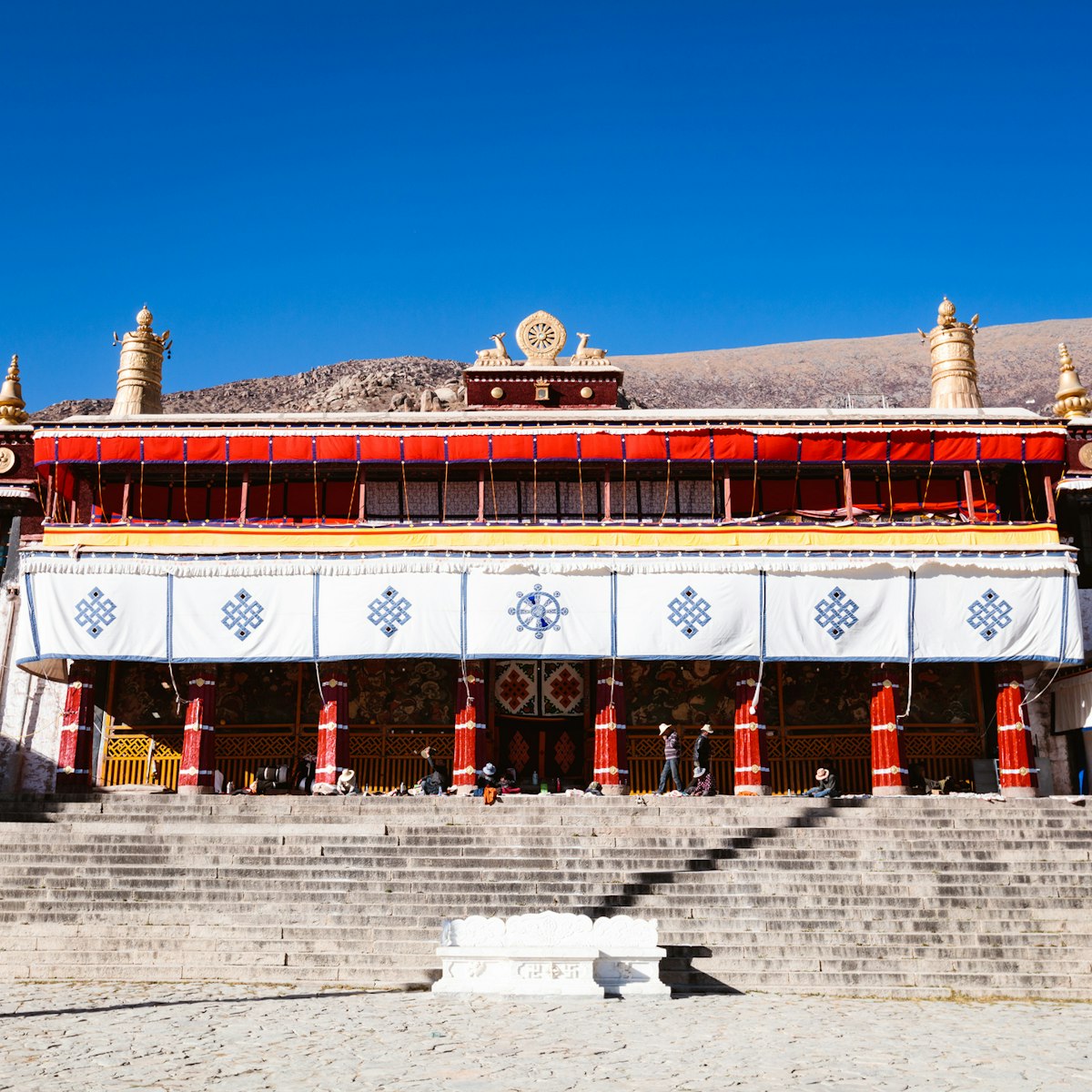The Lukhang is a little-visited temple on a charming island in a lake, behind the Potala in the pleasant Dzongyab Lukhang Park. The Lukhang is celebrated for its 2nd- and 3rd-floor murals, which date from the 18th century, but frustratingly these are currently not visible.
The lake was created during the construction of the Potala. Earth used for mortar was excavated from here, leaving a depression that was later filled with water. Lu (also known as naga) are subterranean dragon-like spirits that were thought to inhabit the area, and the Lukhang, or Chapel of the Dragon King, was built by the sixth Dalai Lama to appease them (and also to use as a retreat). You can see Luyi Gyalpo, the naga king, at the rear of the ground floor of the Lukhang. The naga spirits were finally interred in the nearby Palha Lu-puk.
The 2nd-floor murals tell a story made famous by a Tibetan opera, while the murals on the 3rd floor depict different themes on each of the walls – Indian yogis demonstrating yogic poses (west), 84 mahisaddhas (masters of Buddhism; east), and the life cycle as perceived by Tibetan Buddhists (north), with the gods of Bardo, the Tibetan underworld, occupying its centre. Look for the wonderful attention to detail, down to the hairy legs of the sadhus and the patterns on the clothes.
The 3rd floor contains a statue of an 11-headed Chenresig and a meditation room used by the Dalai Lamas. To see if the 3rd floor has reopened, walk clockwise around the outside of the building and enter from the back via a flight of stairs. Finish your visit with a kora (pilgrim circuit) of the island.
For a detailed commentary on the murals, check out Ian Baker and Thomas Laird’s coffee-table book The Dalai Lama’s Secret Temple: Tantric Wall Paintings from Tibet.



